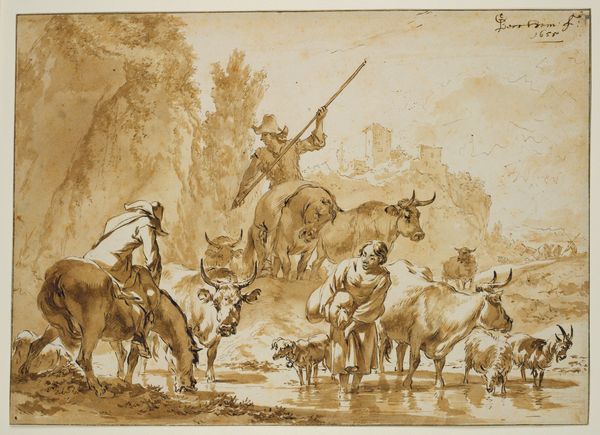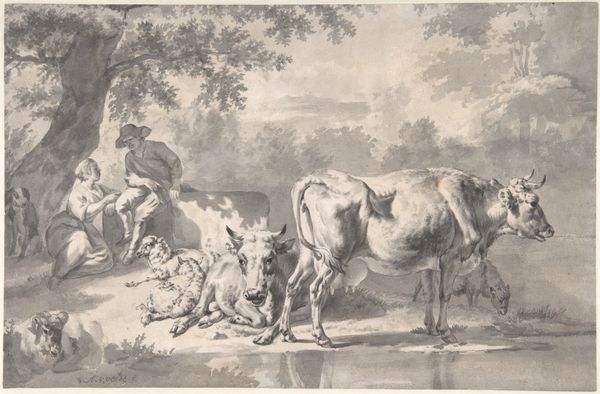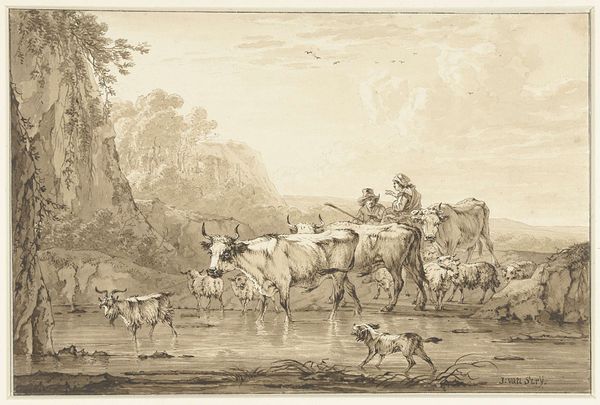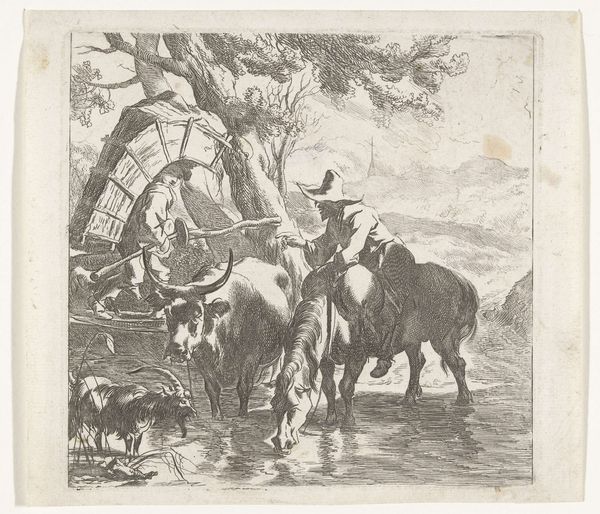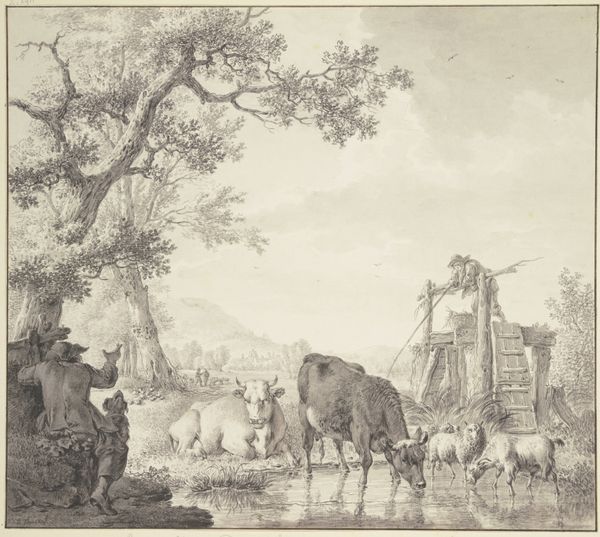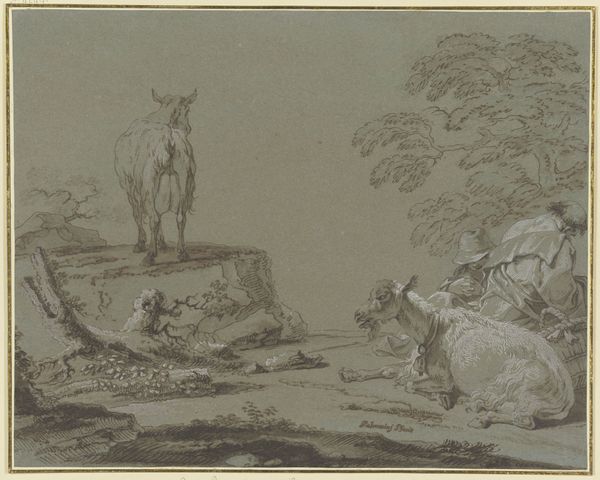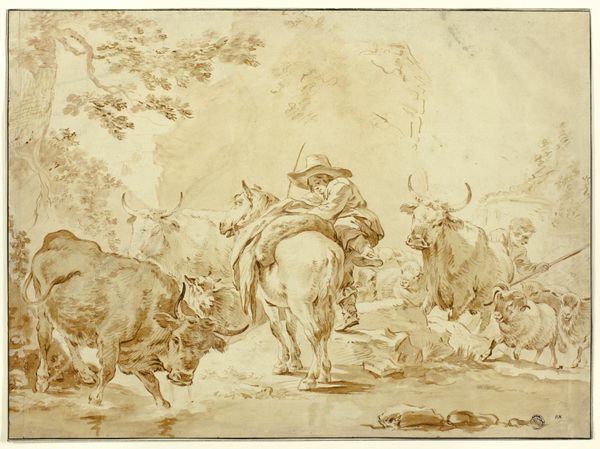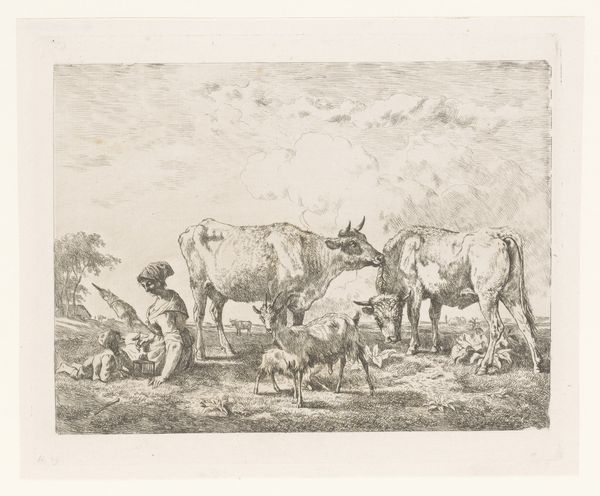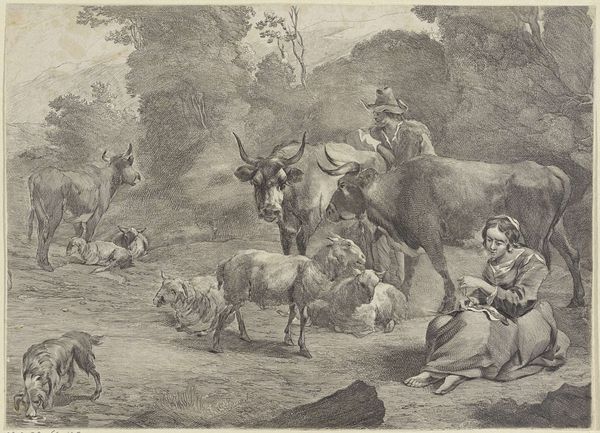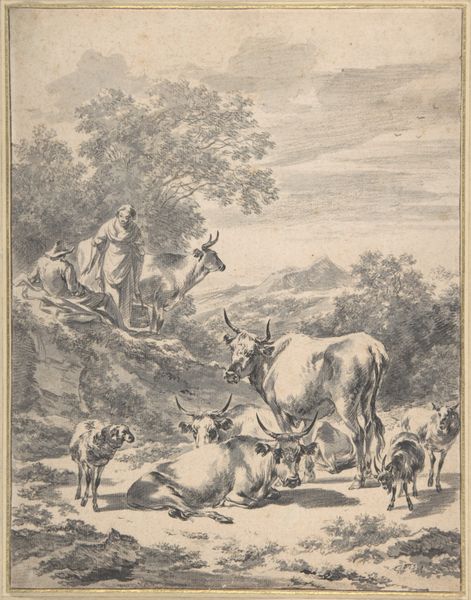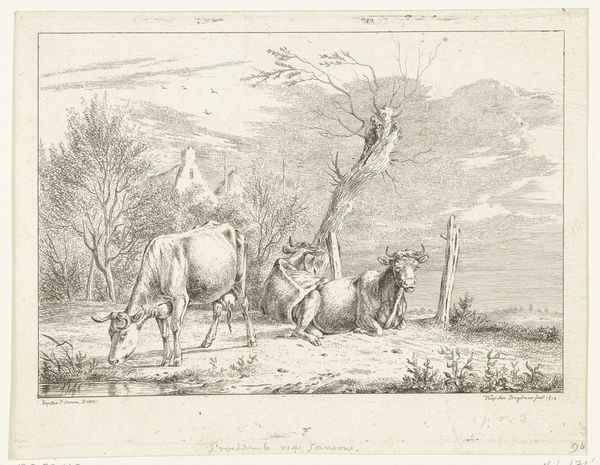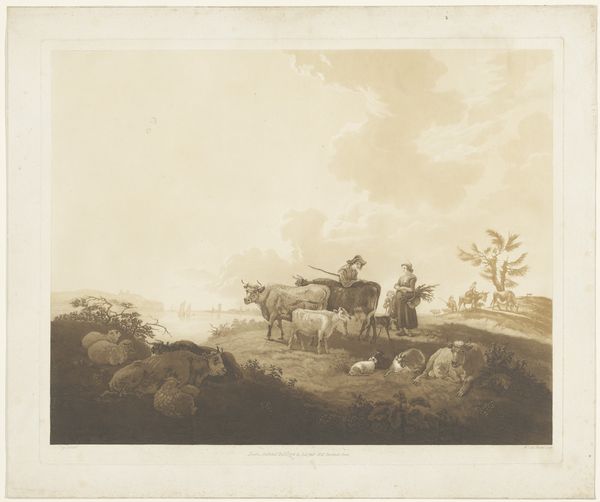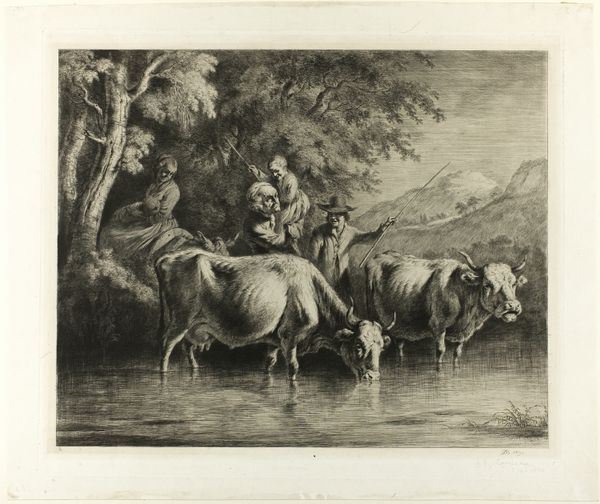
drawing, paper, ink, pencil
#
drawing
#
pencil sketch
#
landscape
#
figuration
#
paper
#
ink
#
romanticism
#
pencil
#
genre-painting
Dimensions: height 246 mm, width 352 mm
Copyright: Rijks Museum: Open Domain
Curator: Dietrich's "Spinnende herderin met kudde," dating from around 1795 to 1821, depicts a spinning shepherdess with her flock. The medium is primarily pencil and ink on paper. Editor: It's remarkably serene, isn't it? The soft lines and muted tones evoke a profound sense of tranquility, almost dreamlike. Curator: Definitely. Considering it is executed with such simple materials – pencil, ink, paper – there is sophistication in its rendering. What can we deduce about artistic training at this time? How did the accessibility of materials dictate subject matter? The creation of pastoral scenes like these might also comment on the economic disparities present then, reflecting a nostalgia for rural labor. Editor: Absolutely. The idealized scene—a woman spinning, seemingly without a care, while tending her animals—speaks to the Romantic fascination with nature and the rural, almost as a counterpoint to the social upheavals following the French Revolution. Was this imagined labor different than that done by actual female textile workers? Curator: It is interesting to compare it to textile production, as hand-spinning represented not just a method but also the exploitation inherent within early manufacturing processes. It asks us: whose hands created beauty and under what conditions? The quality of paper could even speak to issues of wealth or access. Editor: Yes, by analyzing its presence as labor, and considering what textile creation and trade meant economically and politically, we can think about how gendered and class dynamics informed the narrative the artist constructs. Her calmness seems performative, placed against socio-economic struggle, but it becomes less of a representation of ease. Curator: Indeed. And thinking of Romanticism in this period allows for such rich interpretation through careful consideration of material processes, social, political, and historical circumstances. Editor: Ultimately, seeing Dietrich’s piece forces us to confront the complexity of even seemingly simple representations of the past, through different methods.
Comments
No comments
Be the first to comment and join the conversation on the ultimate creative platform.
